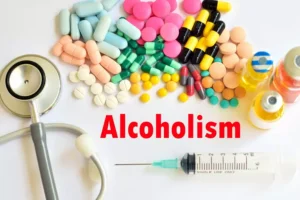
If the reason for the violation is attributed to internal, stable, and/or global factors, such as lack of willpower or possession of an underlying disease, then the individual is more likely to have a full-blown relapse after the initial violation occurs. On the other hand, if the reason for the violation is attributed to external, unstable, and/or local factors, such as an extremely tempting situation, then the individual is more likely to recover from the violation and get back onto the path of abstinence. Early learning theories and later social cognitive and cognitive theories have had a significant influence on the formulation CBT for addictive behaviours. Theoretical constructs such as self-efficacy, appraisal, outcome expectancies related to addictions arising out these models have impacted treatment models considerably.
Online social network site addiction: A comprehensive review
First, in the context of pharmacotherapy interventions, relevant genetic variations can impact drug pharmacokinetics or pharmacodynamics, thereby moderating treatment response (pharmacogenetics). Second, the likelihood of abstinence following a behavioral or pharmacological intervention can be moderated by genetic influences on metabolic processes, receptor activity/expression, and/or incentive value specific to the addictive substance in question. Third, variants implicated in broad traits relevant for addictive behaviors–for instance, executive cognitive functioning (e.g., COMT) or externalizing traits (e.g., GABRA2, DRD4)–could influence relapse proneness via general neurobehavioral mechanisms, irrespective of drug class or treatment modality.
2. Relationship between goal choice and treatment outcomes
Considering the numerous developments related to RP over the last decade, empirical and clinical extensions of the RP model will undoubtedly continue to evolve. In addition to the recent advances outlined above, we highlight selected areas that are especially likely to see growth over the next several years. Alan Marlatt is a professor of Psychology and Director of the Addictive Behaviors Research Center at the University of Washington. He has received continuous funding for his research from a variety of agencies including the National Institute on Alcohol Abuse and Alcoholism, the National Institute on Drug Abuse, the Alcoholic Beverage Medical Research Foundation, and the Robert Wood Johnson Foundation.
- Nevertheless, 40 to 60% of people who once were addicted to a substance and achieved sobriety relapse at some point, based on estimates from the National Institute on Drug Abuse (NIDA).
- Therapy focuses on providing the individual the necessary skills to prevent a lapse from escalating into a relapse31.
- MET adopts several social cognitive as well as Rogerian principles in its approach and in keeping with the social cognitive theory, personal agency is emphasized.
- Most often, relapse tends to be construed as a return to pretreatment levels of occurrence of the targeted behavior.
- Against this backdrop, both tonic (stable) and phasic (transient) influences interact to determine relapse likelihood.
Abstinence Violation Effect: How Does Relapse Impact Recovery?
- These findings may be informative for researchers who wish to incorporate genetic variables in future studies of relapse and relapse prevention.
- With regard to addictive behaviours Cognitive Therapy emphasizes psychoeducation and relapse prevention.
- The greatest strength of cognitive behavioural programmes is that they are individualized, and have a wide applicability.
- One study found that smokers’ attentional bias to tobacco cues predicted early lapses during a quit attempt, but this relationship was not evident among people receiving nicotine replacement therapy, who showed reduced attention to cues [60].
- Tonic processes also include cognitive factors that show relative stability over time, such as drug-related outcome expectancies, global self-efficacy, and personal beliefs about abstinence or relapse.
Most adults with SUD do not seek treatment because they do not wish to stop using substances, though many also recognize a need for help. This narrative review considers the need for increased research attention on nonabstinence psychosocial treatment of SUD – especially drug use disorders – as a potential way to engage and retain more people in treatment, to engage people in treatment earlier, and to improve treatment effectiveness. Despite significant empirical support for nonabstinence alcohol interventions, there is a clear gap in research examining nonabstinence psychosocial treatment for drug use disorders.
He reported difficulty sleeping if he did not drink, could not get past the day without drinking or thinking about his next drink (establishment of a dependence pattern). His wife brought him for treatment and he was not keen abstinence violation effect on taking help He did not believe it was a problem (stage of change). He believed that drinking helped him across many domains of life (positive outcome expectancies regarding alcohol use and its effects, stage of change).
- This concurs not only with clinical observations, but also with contemporary learning models stipulating that recently modified behavior is inherently unstable and easily swayed by context [32].
- The AVE process typically involves a triggering event or cue, such as encountering a tempting situation, feeling stressed, or experiencing a moment of weakness.
- Consistent with this idea, EMA studies have shown that social drinkers report greater alcohol consumption and violations of self-imposed drinking limits on days when self-control demands are high [79].
- Thus, examining withdrawal in relation to relapse may only prove useful to the extent that negative affect is assessed adequately [64].
- The evolution of cognitive-behavioral theories of substance use brought notable changes in the conceptualization of relapse, many of which departed from traditional (e.g., disease-based) models of addiction.

A key feature of the dynamic model is its emphasis on the complex interplay between tonic and phasic processes. As indicated in Figure Figure2,2, distal risks may influence relapse either directly or indirectly (via phasic processes). For instance, the return to substance use can have reciprocal effects on the same cognitive or affective factors (motivation, mood, self-efficacy) that contributed to the lapse.
Empirical findings relevant to the RP model

Relapse prevention for addictive behaviors

Leave a Reply